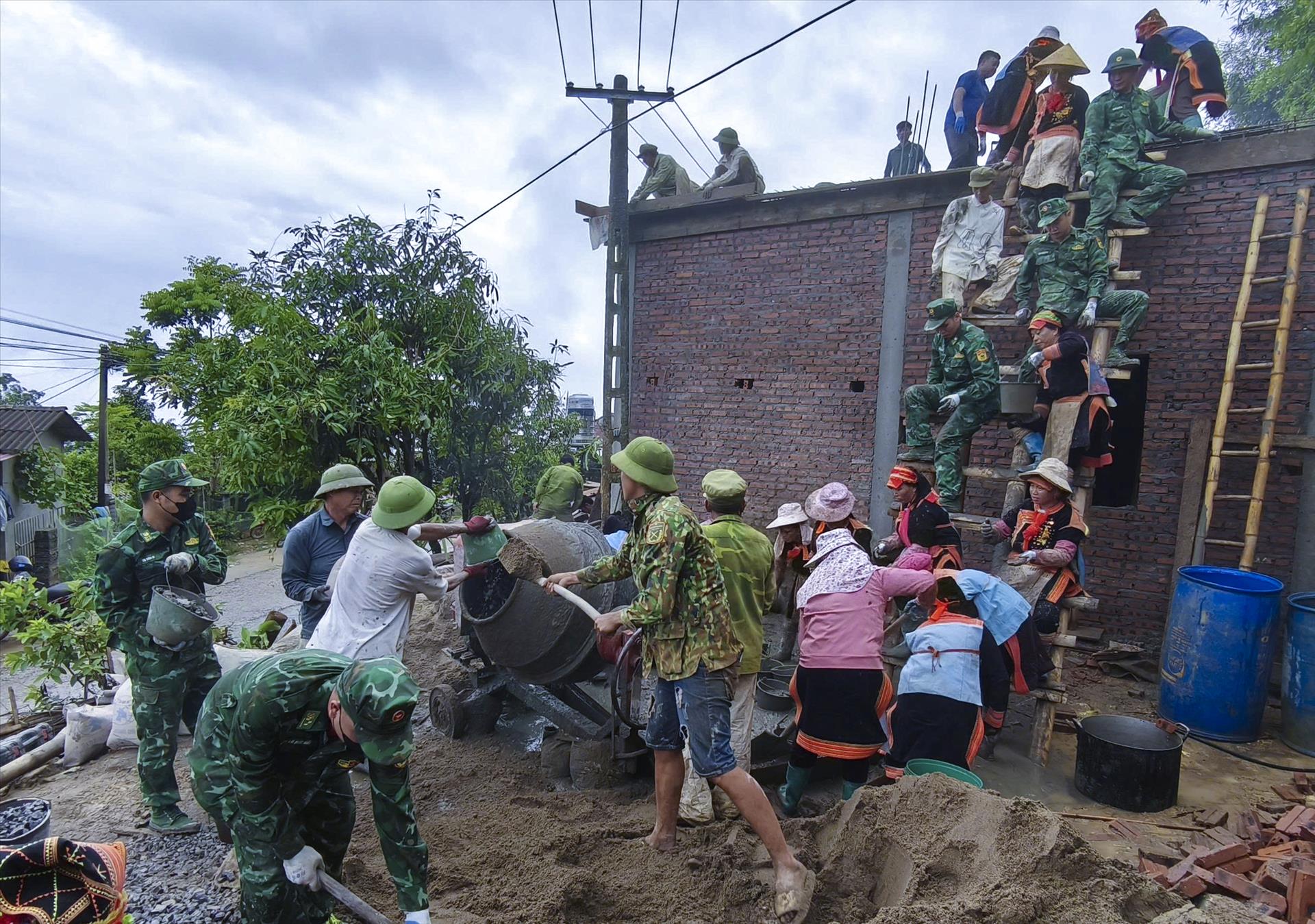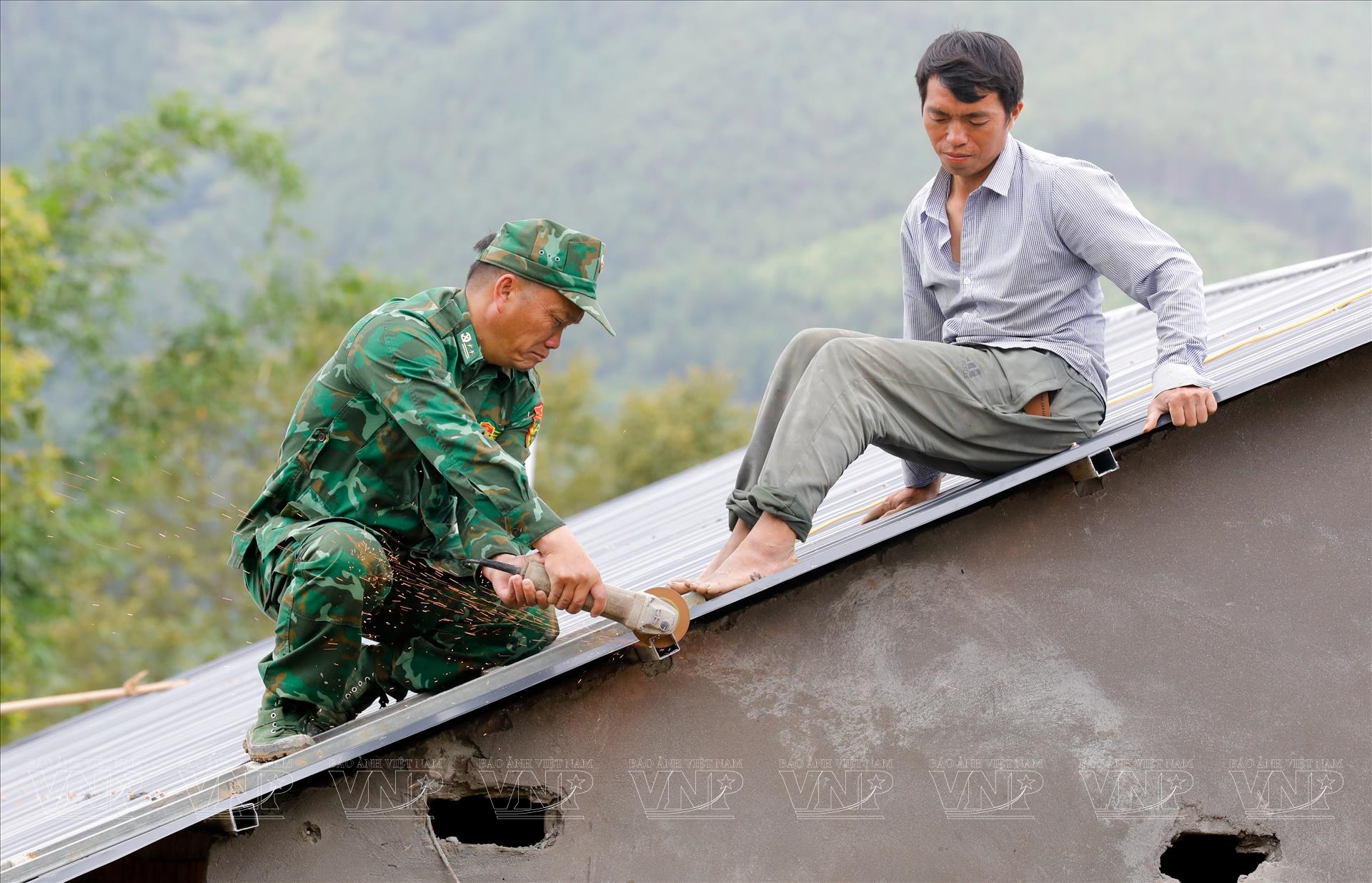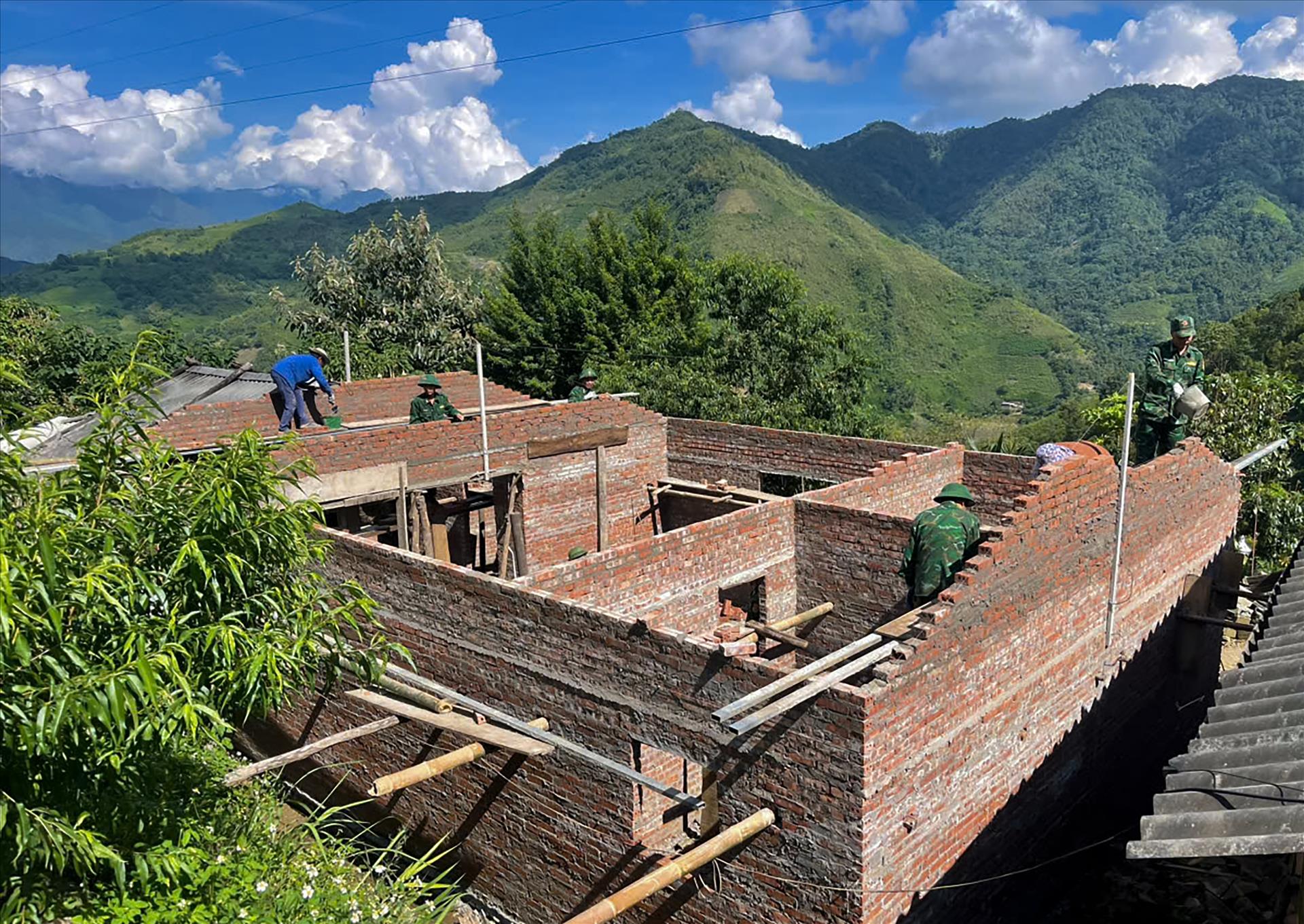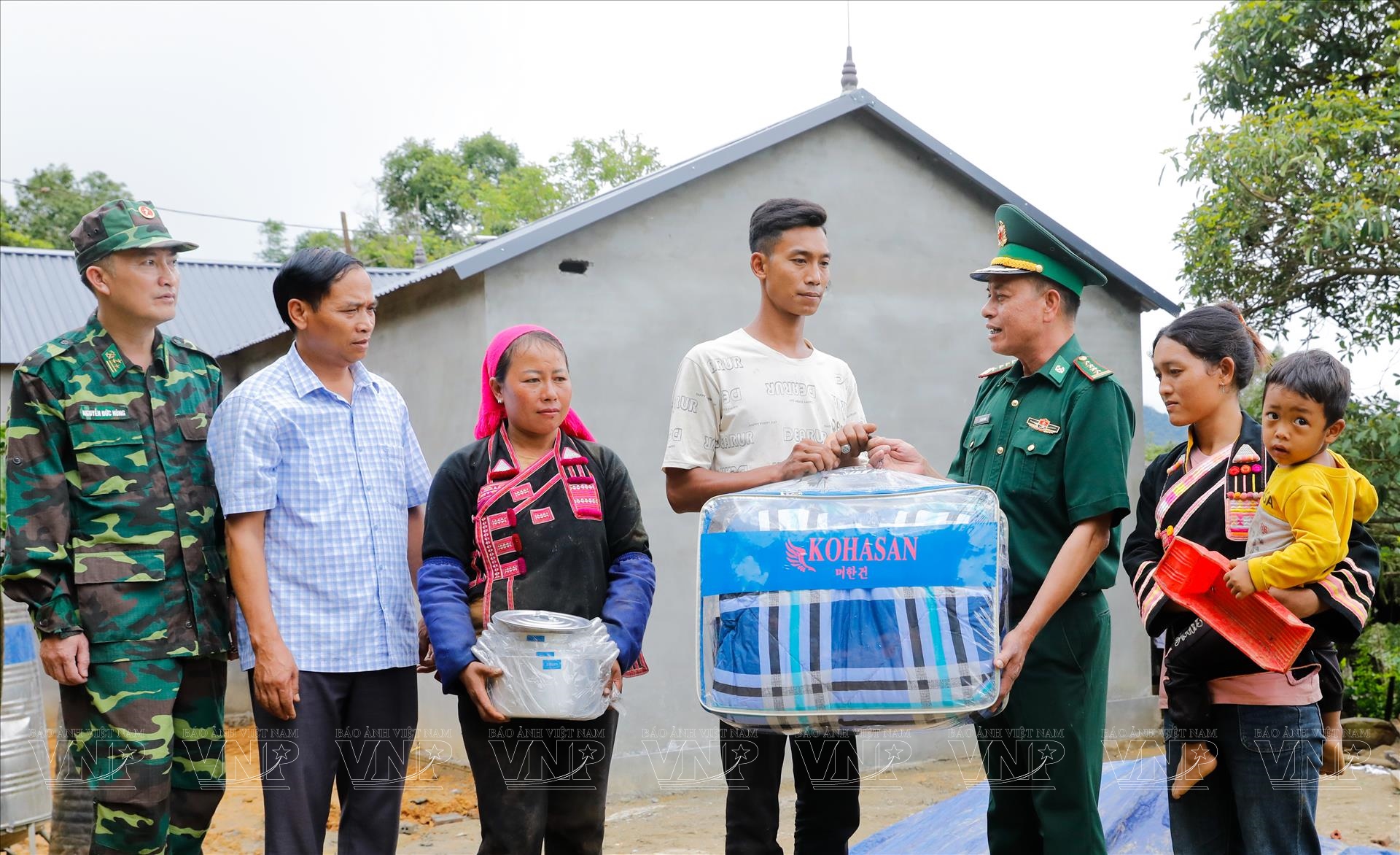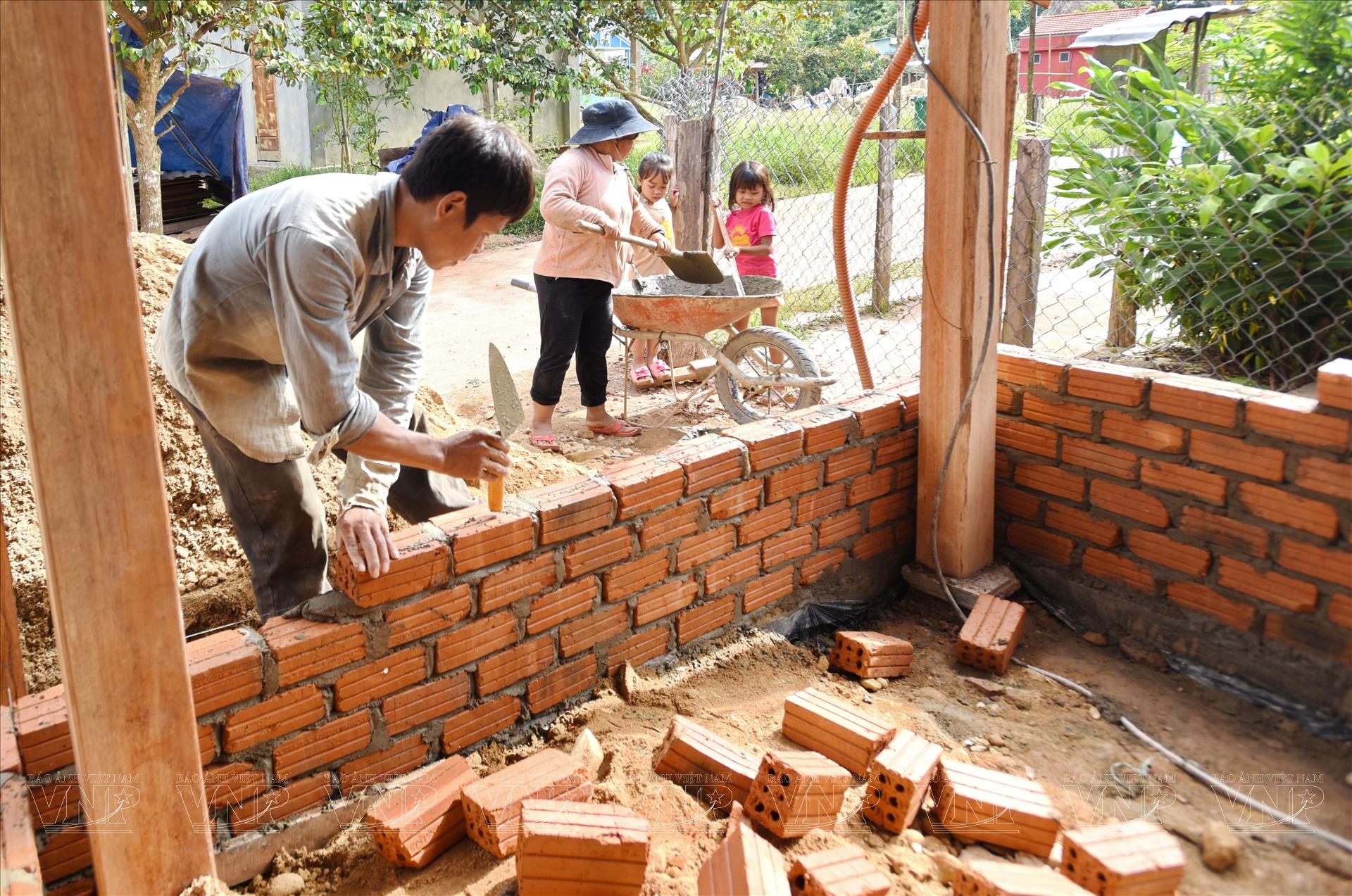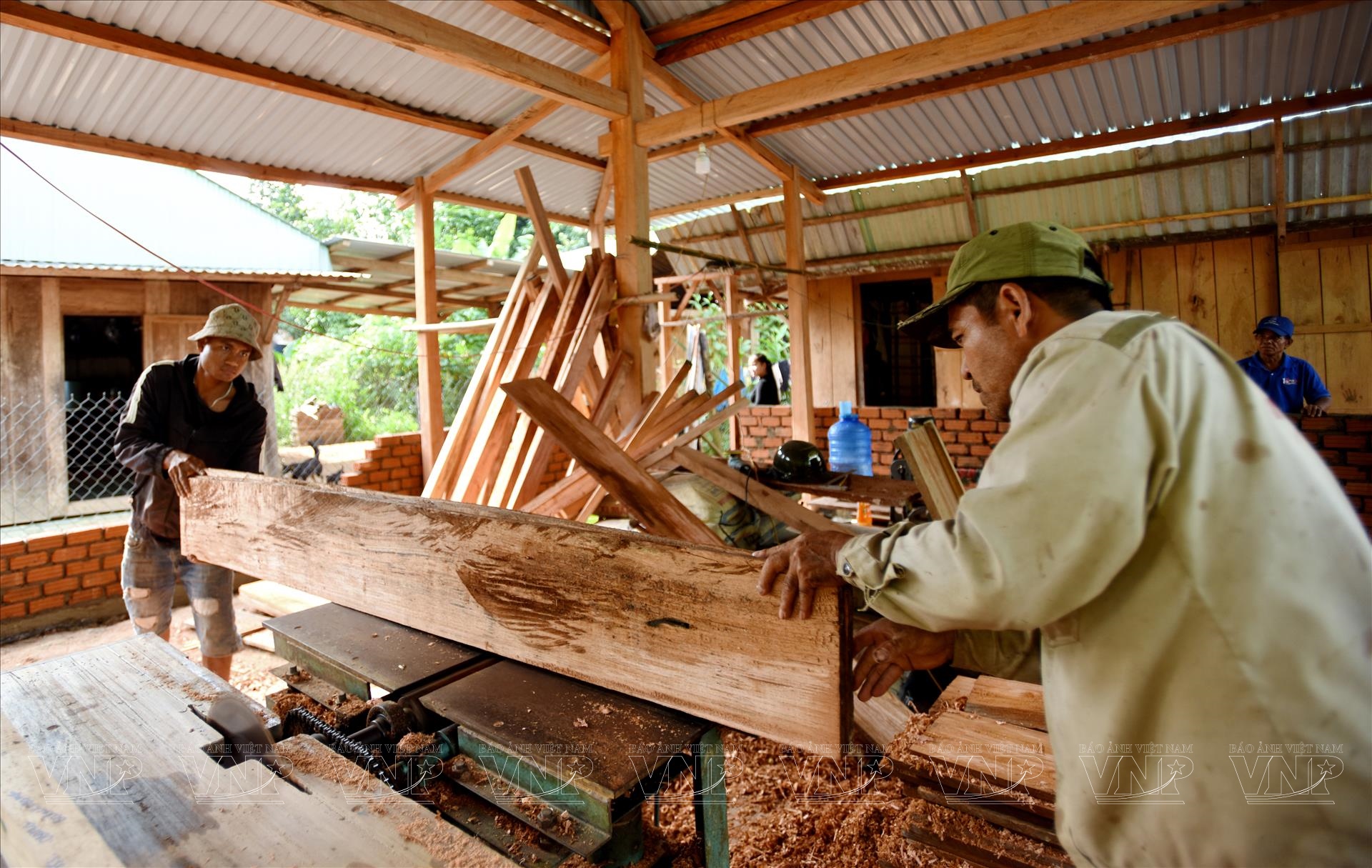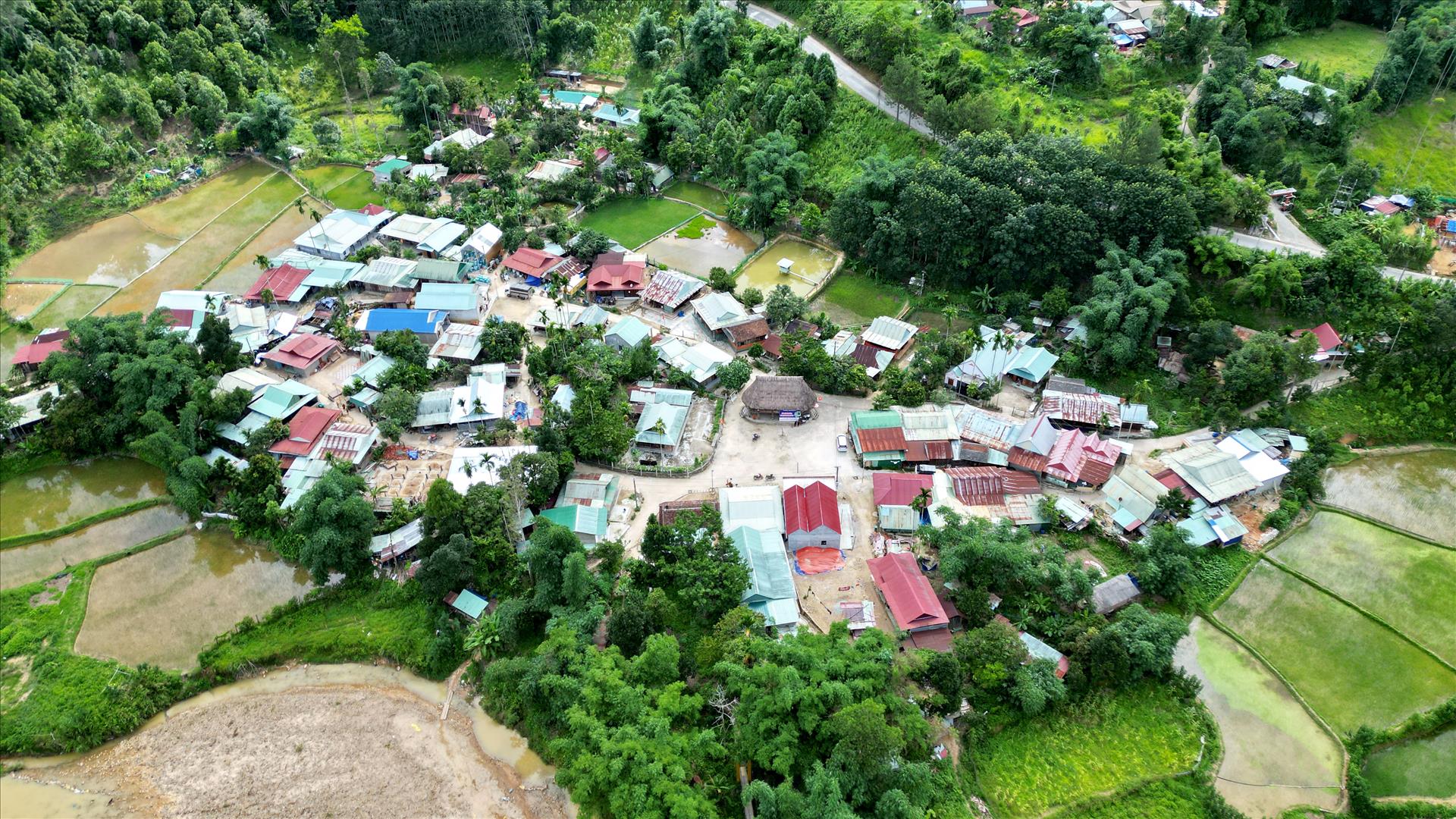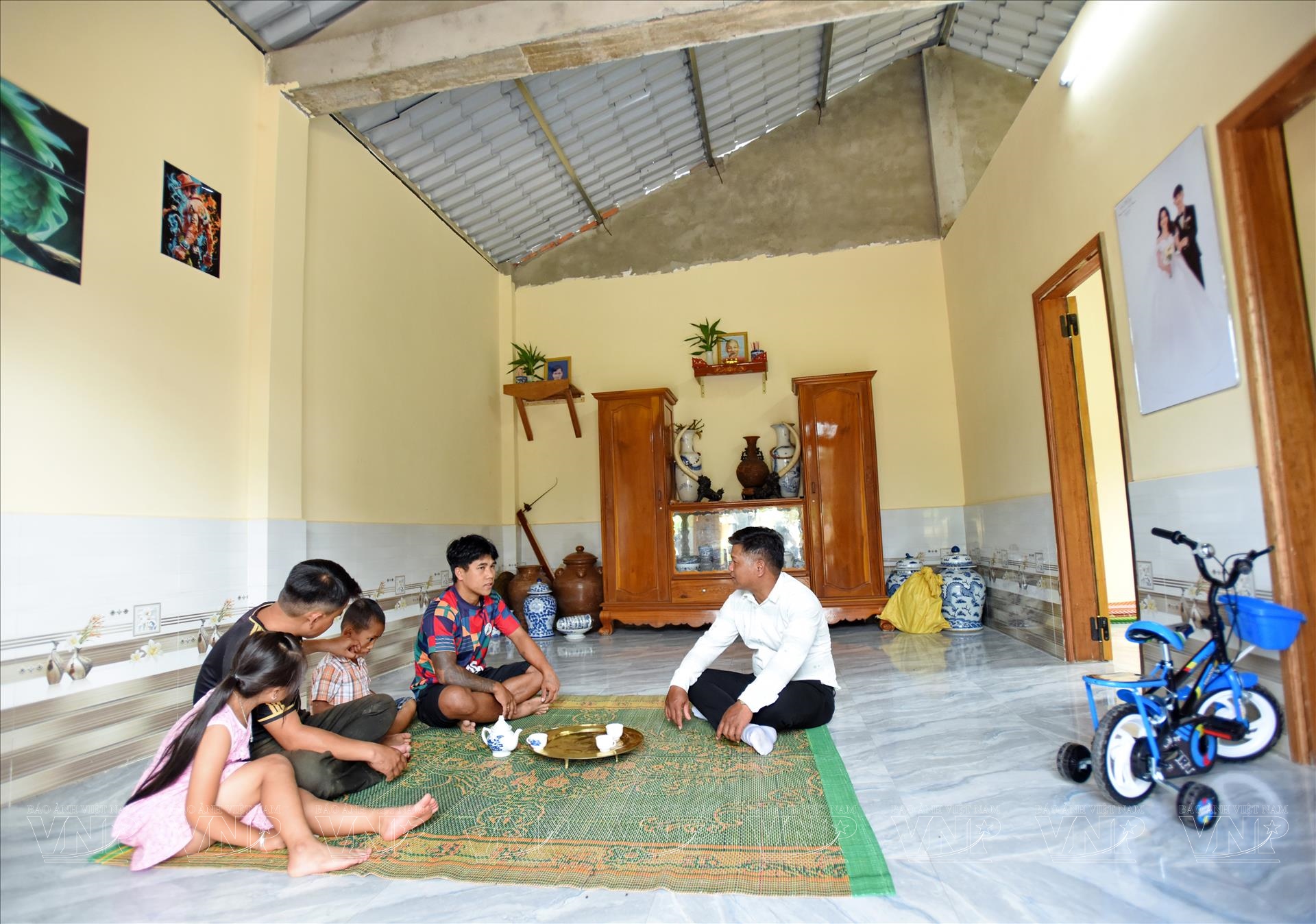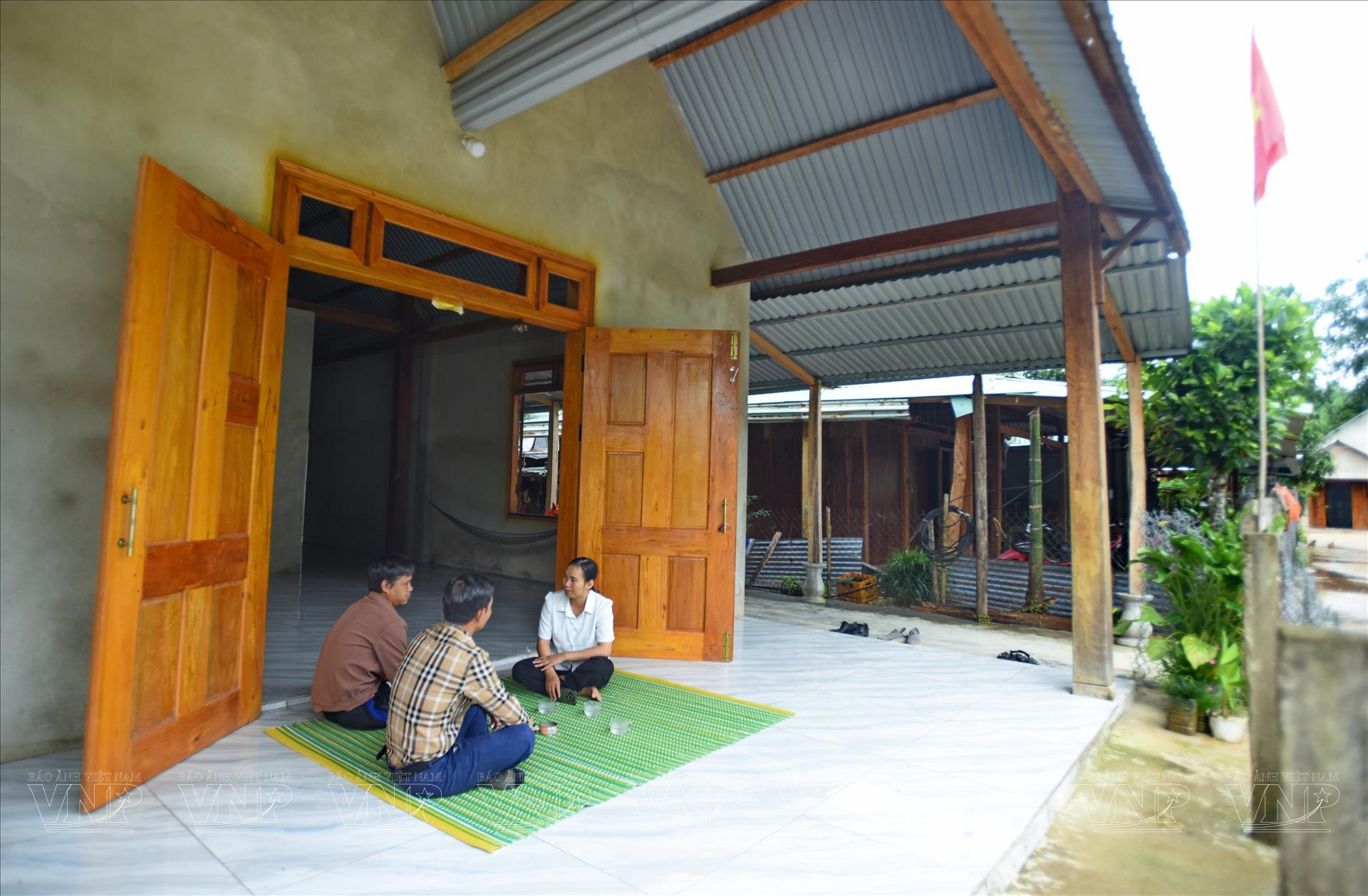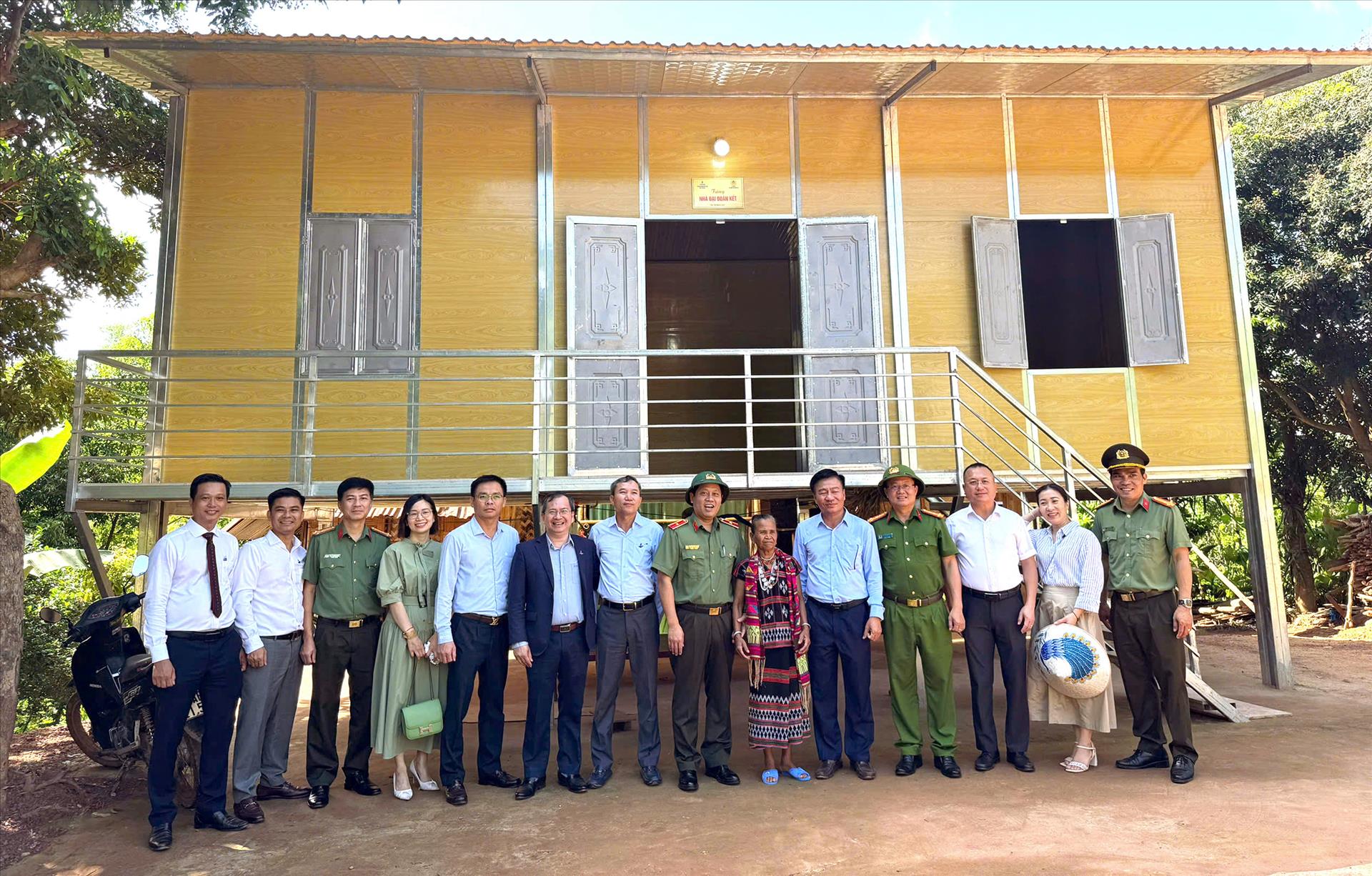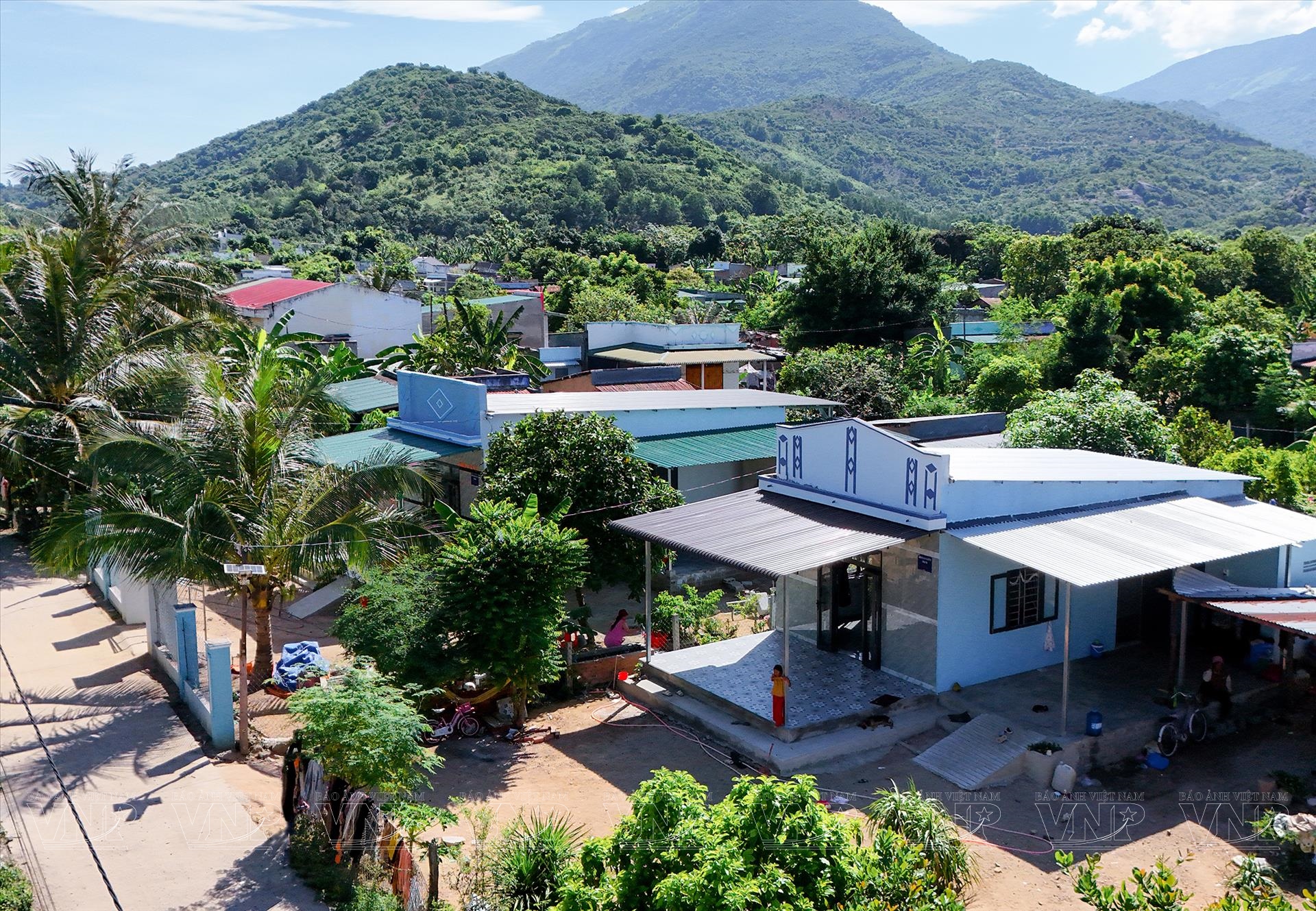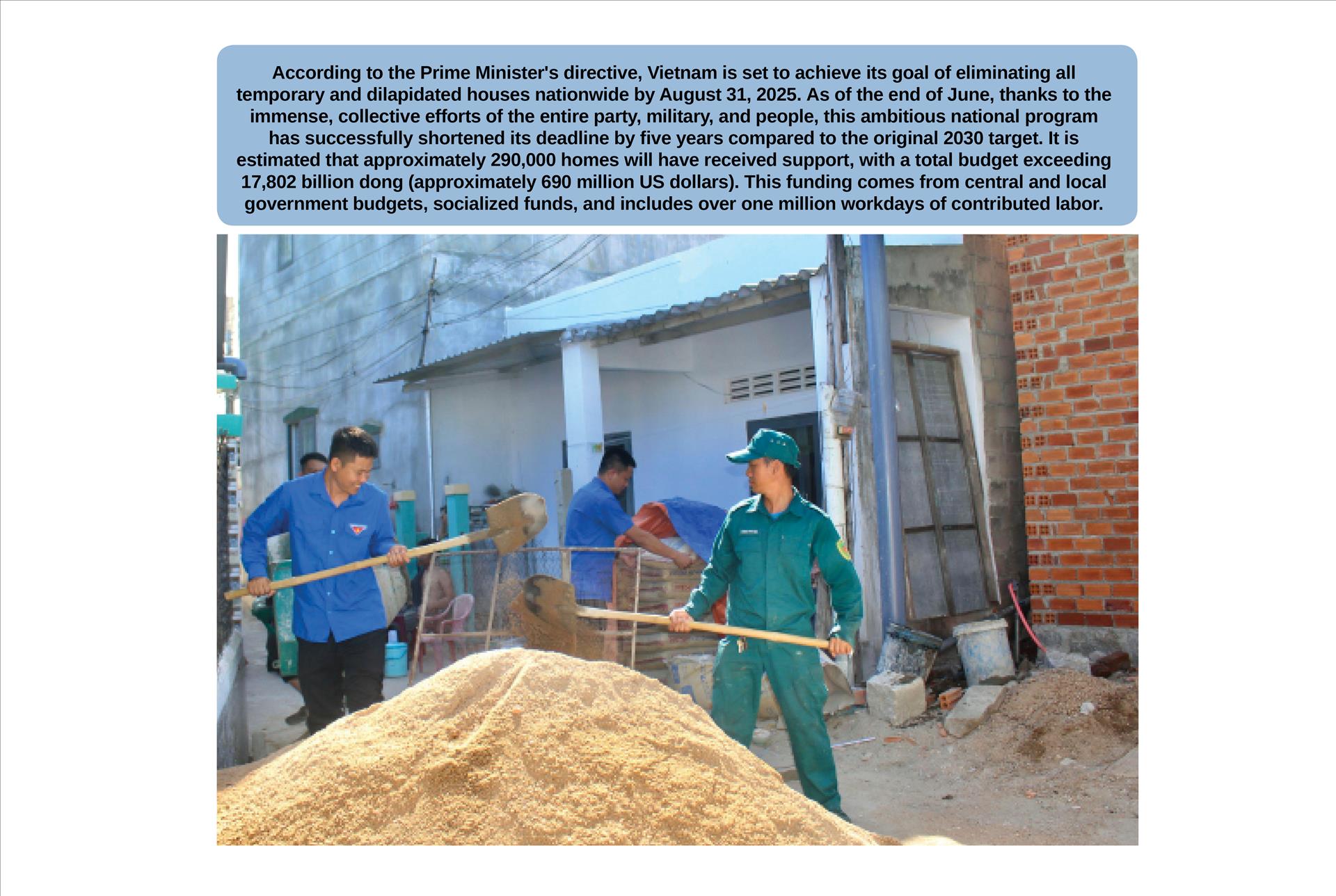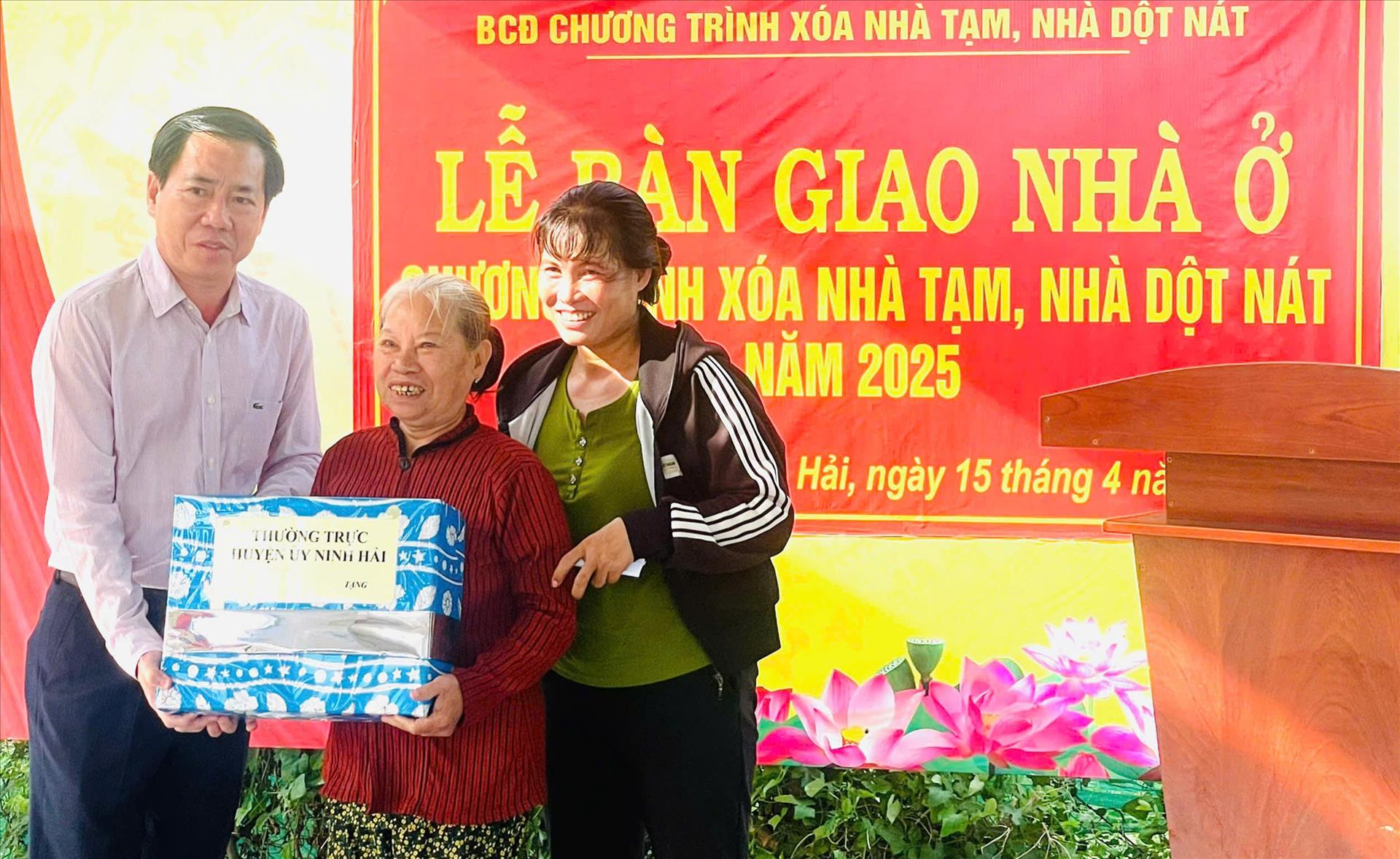Homes for All : Vietnam's Drive to Eradicate Substandard Housing
For nearly 40 years of Doi moi (renewal), Vietnam has achieved many remarkable transformations. Yet, even amid a brightening socio-economic landscape, approximately 274,000 poor and near-poor households, along with policy beneficiaries, still live in temporary or dilapidated homes.

It was June, the peak of the rainy season in Lai Chau, but we were determined to cross the misty Hong Thu Man Pass to reach the windy Phong Tho region. In the car, Senior Colonel Le Cong Thanh, Deputy Political Commissar of the Lai Chau Provincial Border Guard Command, remarked, "Rain, wind, and landslides won't stop our march. Our comrades are working day and night, staying close to the villages and people, joining hands to help residents build new homes".
The muddy dirt road did not impede our team's progress to Huoi Luong 2 Hamlet, nearly 2,000m above sea level. Rain obscured the sky, but border guards still braved the downpour to help the family of Mao Van Xuan, a Ha Nhi ethnic minority, build their house.
Mao Van Xuan excitedly shared, "My old house over there probably wouldn't survive this rainy season! But thanks to the state's support, my family borrowed more from the bank and saved a little. With the help and labor from the border guards, I am about to have this new house, nearly 80m2".
The determination to eliminate temporary and dilapidated houses is not only a sound policy of the party and state but also a call that resonates deeply within every Lai Chau border guard. By the end of June 2025, the Lai Chau Provincial Border Guard had mobilized 2,859 cadres and soldiers, contributing 3,666 workdays to help residents build 546 new houses. Beyond contributing labor, the Provincial Border Guard Command also launched, propagated, and mobilized donations to support the movement to eliminate temporary and dilapidated houses. Additionally, the Provincial Border Guard and border stations coordinated to appeal to businesses and philanthropists, who donated nearly three billion dong (approximately 115,000 US dollars) to support construction costs and materials for the people.
With the high determination of the border soldiers, the journey to eliminate temporary houses in Lai Chau is gradually reaching its target on schedule. In especially difficult border areas like Si Lo Lau, Pa U, Huoi Luong, Pa Ve Su and Ta Ba, sturdy homes are rising day by day, bringing with them trust and motivation for border residents to stabilize their lives and jointly preserve every inch of their homeland on the nation's frontier.

Central Vietnam and the Central Highlands - regions constantly affected by natural disasters, floods, and storms are facing more difficulties compared to other parts of the country. Therefore, they have the largest number of households experiencing housing difficulties nationwide. Consequently, the program to eliminate temporary and dilapidated houses is a top priority for the government. Thanks to this, most localities in the region, such as Quang Tri, Hue, Da Nang, Quang Ngai, Binh Dinh, Khanh Hoa, Lam Dong, and Dak Lak, have diligently completed the program, with many even finishing ahead of the August 31 deadline set by the government.
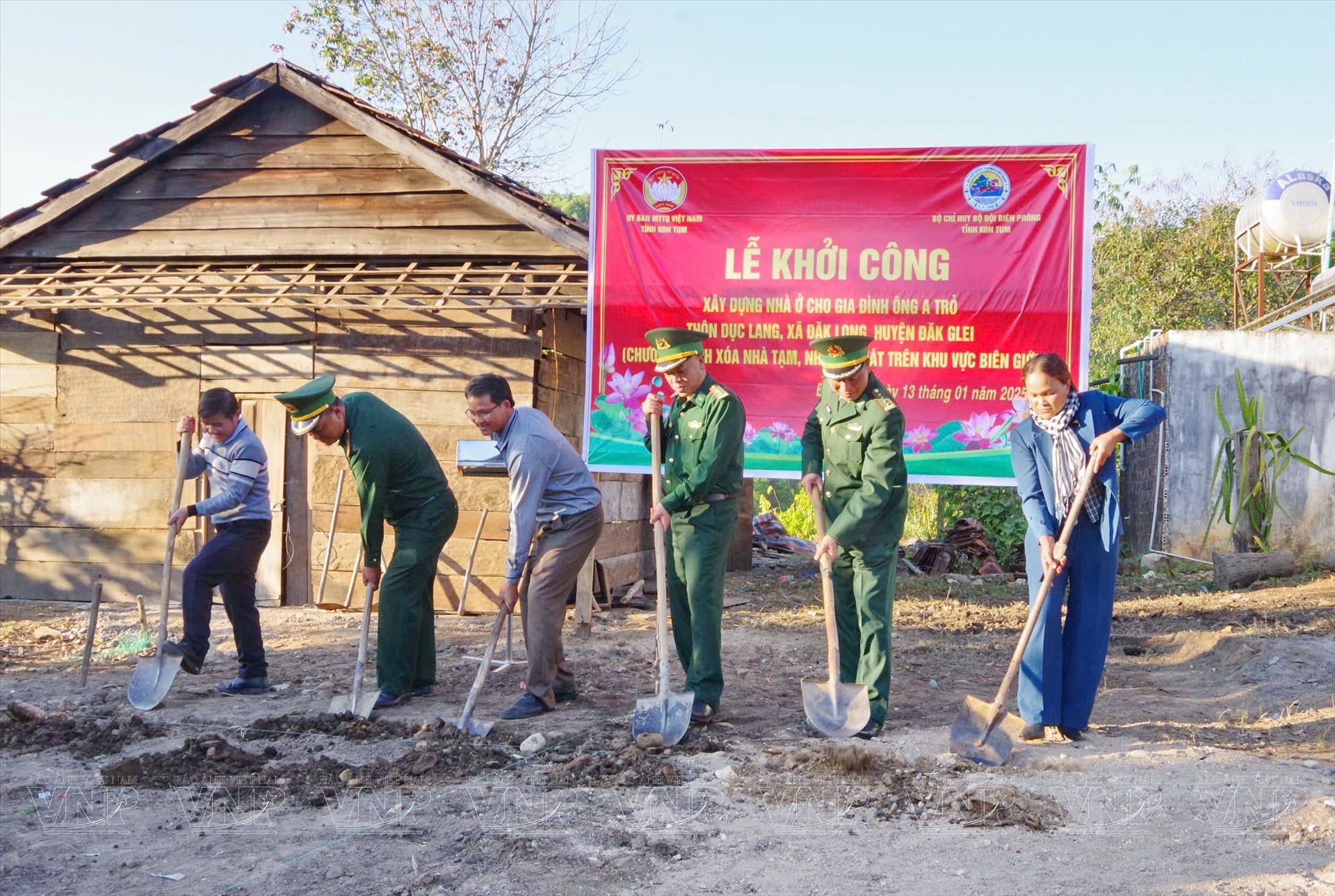
Tay Giang District, Quang Nam Province (now Tay Giang Commune, Da Nang City), is a mountainous area bordering Laos. Here, approximately 95% of the population are Co Tu ethnic minorities. The remote, mountainous terrain and sparse population present numerous economic hardships. However, thanks to decisive support from the government, the city, local authorities at all levels, and other charitable sources, the program to eliminate temporary and dilapidated houses has been completed ahead of schedule. This ensures safe housing for residents before this year's unpredictable rainy and stormy season.
Arat Blui, Chairman of Tay Giang Commune People's Committee, personally inspected all areas, visiting some multiple times. He stated that the program to eliminate temporary and dilapidated houses was implemented very well. Utilizing capital from the central government, local budgets, socialized funds, and residents' contributed labor, Tay Giang has fundamentally completed the construction and repair of houses for its people, ensuring they can move in safely before this year's rainy season and floods.
Bhling Phat, a Co Tu ethnic minority and head of Por'ning Village, added that the program to eliminate temporary and dilapidated houses demonstrates the state's profound concern for the people. Previously, Por'ning Village had many households without stable housing. Thanks to the program, more than 30 households in the village have now received support for repair or new construction, ensuring their safe, longterm, and stable living conditions.
To implement the program to eliminate temporary and dilapidated houses, from 2021 to 2025, Tay Giang District, Quang Nam Province (now Tay Giang Commune, Da Nang), repaired and built 1,067 houses, with 407 houses handed over in the first six months of 2025 alone. As of now, the locality has completed the program ahead of the August 31 deadline set by the government.

With a determination to complete the program to eliminate temporary and dilapidated houses on schedule as stipulated by the government, many southern localities have also finished this program early. For example, Ho Chi Minh City (prior to its administrative merger) completed the construction and repair of 1,222 houses with a total budget of over 70 billion dong (approximately 2.7 million US dollars) for poor, near-poor, and housing disadvantaged households. This contributed practically and meaningfully to activities celebrating the 50th anniversary of the Liberation of the South and National Reunification on April 30, 2025
Many other localities, prior to their administrative mergers, such as Soc Trang, Ca Mau, Can Tho, Ninh Thuan, An Giang, and Vinh Long provinces, also completed the program ahead of schedule.
In Ninh Thuan Province (prior to its administrative merger), a locality home to significant Cham (about 13%) and Raglai (about 11%) communities, along with other ethnic groups, we were truly impressed by the “90-day and night campaign in response to the “Joining Hands to Eliminate Temporary and Dilapidated Houses by 2025” program'”. In just about two months of implementation (from early April to the end of May 2025), Ninh Thuan completed the construction and repair of 2,183 houses, which were handed over to housing-disadvantaged residents to stabilize their lives.
To implement the program to eliminate temporary and dilapidated houses, from early 2025, Ninh Thuan Province (prior to its administrative merger) actively mobilized over 141.7 billion dong (approximately 5.4 milion US dollars) to build 1,526 new houses and repair 657 houses. With the consensus and high determination of the government, the timely support from businesses and entrepreneurs, and the sharing of the community, Ninh Thuan shortened the time and completed the elimination of temporary and dilapidated houses before the set target date.
By Thanh Hoa, Viet Cuong, Le Minh, Thong Thien, Son Nghia/VNP, Thanh Phong, Nguyen Linh & Files
Translated by Hong Hanh

